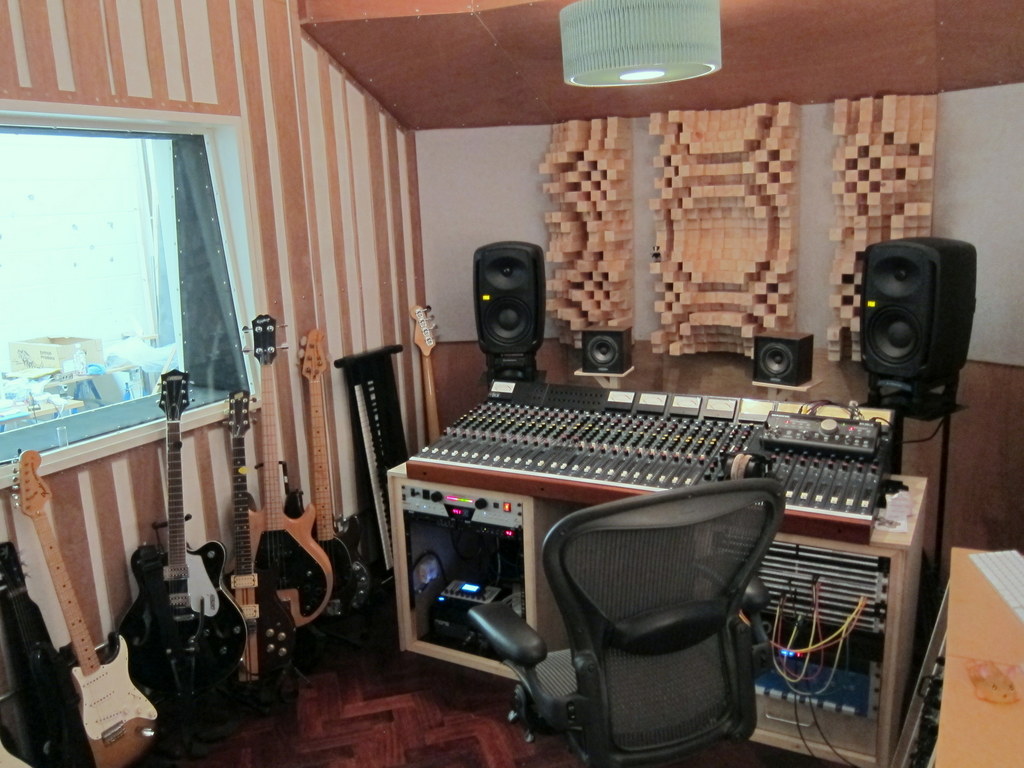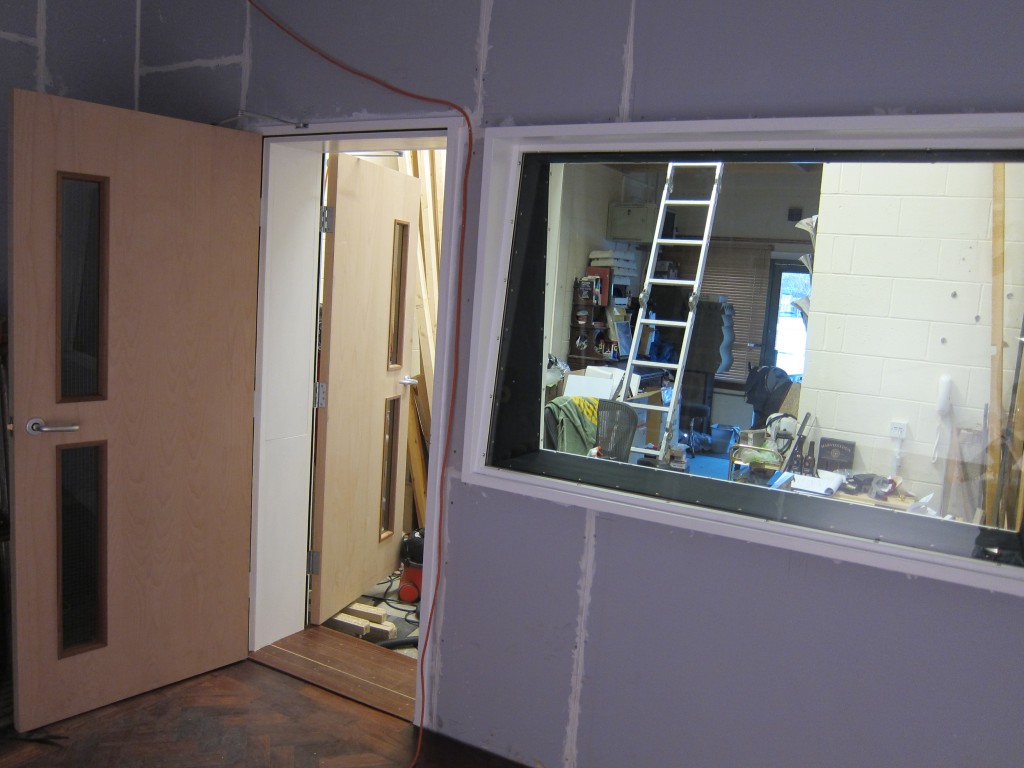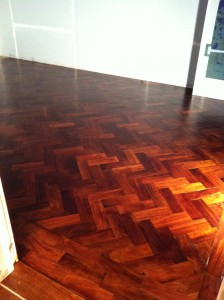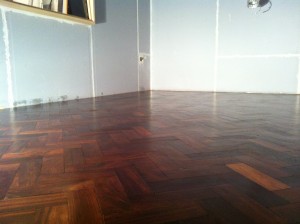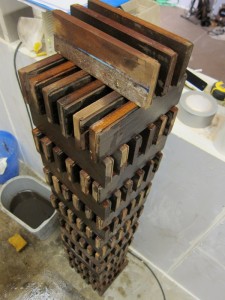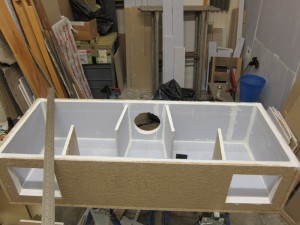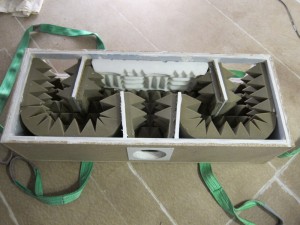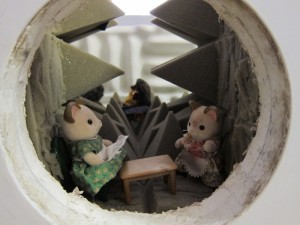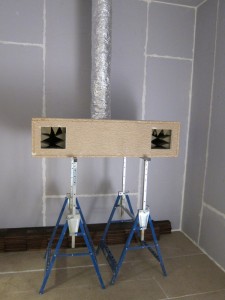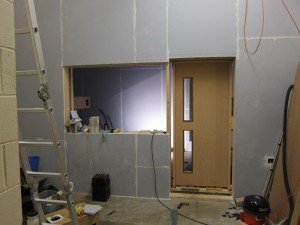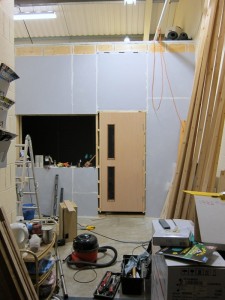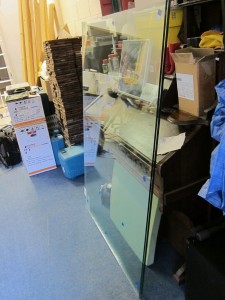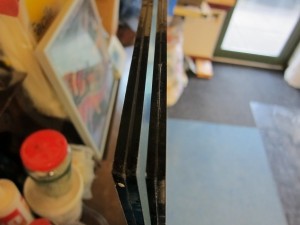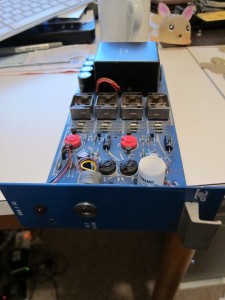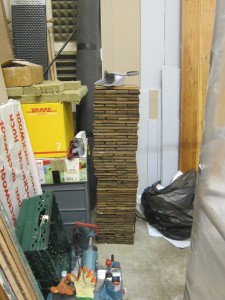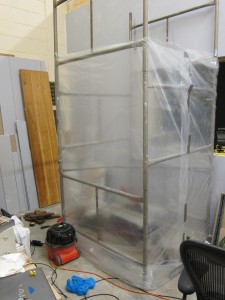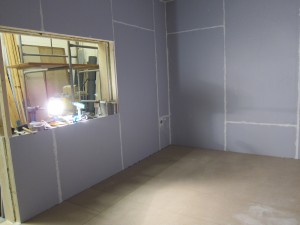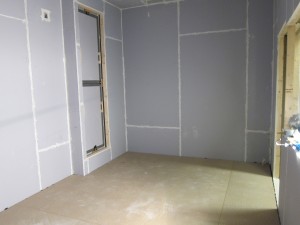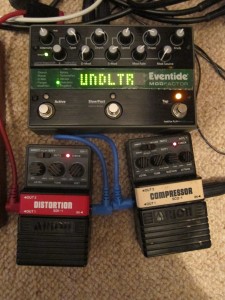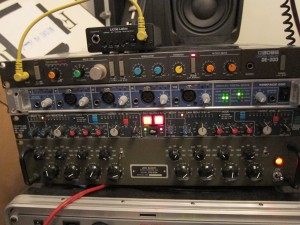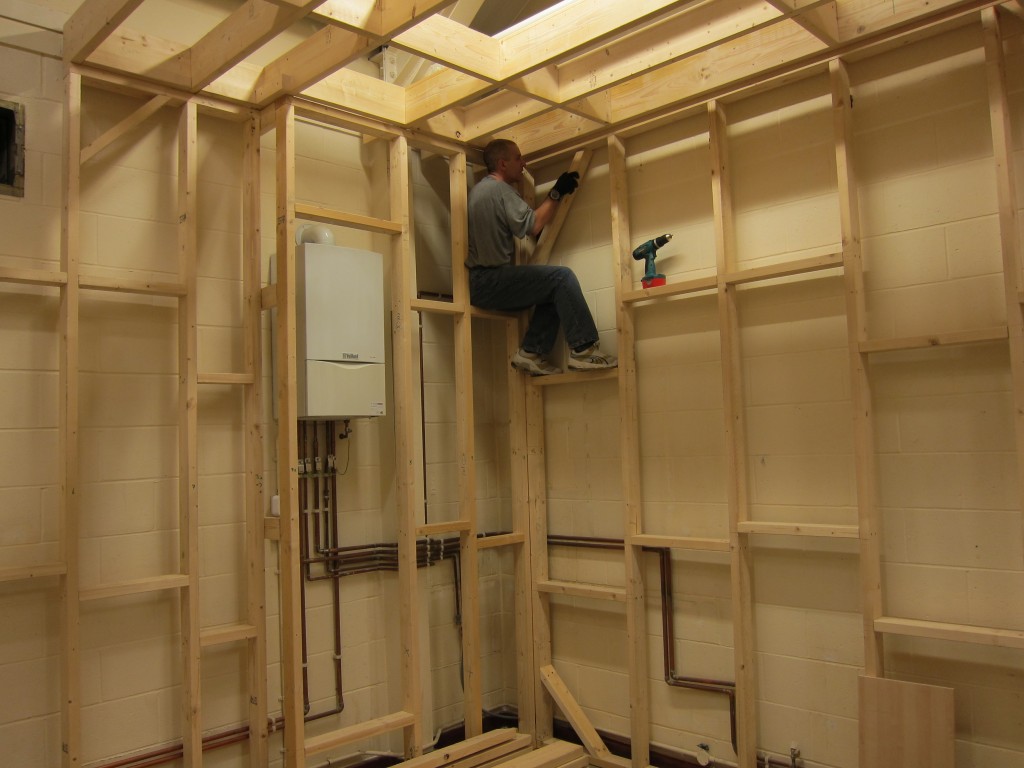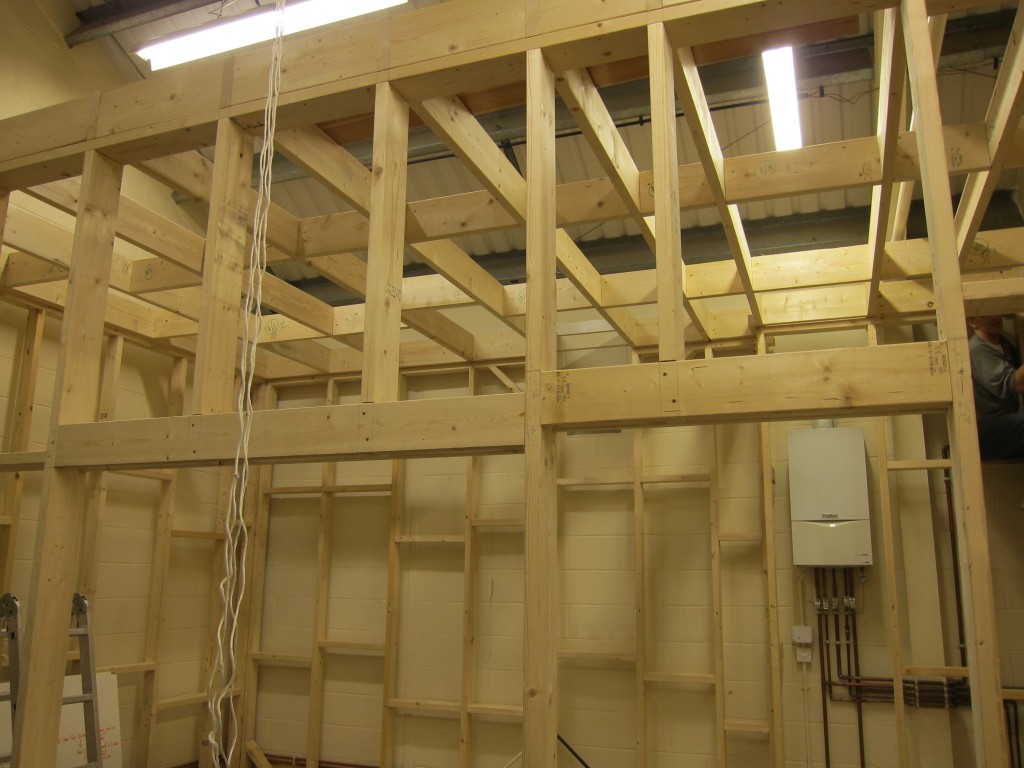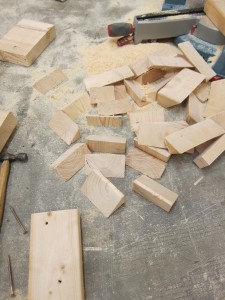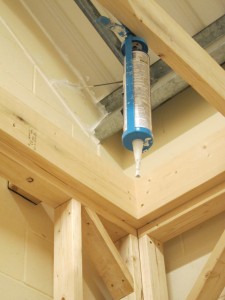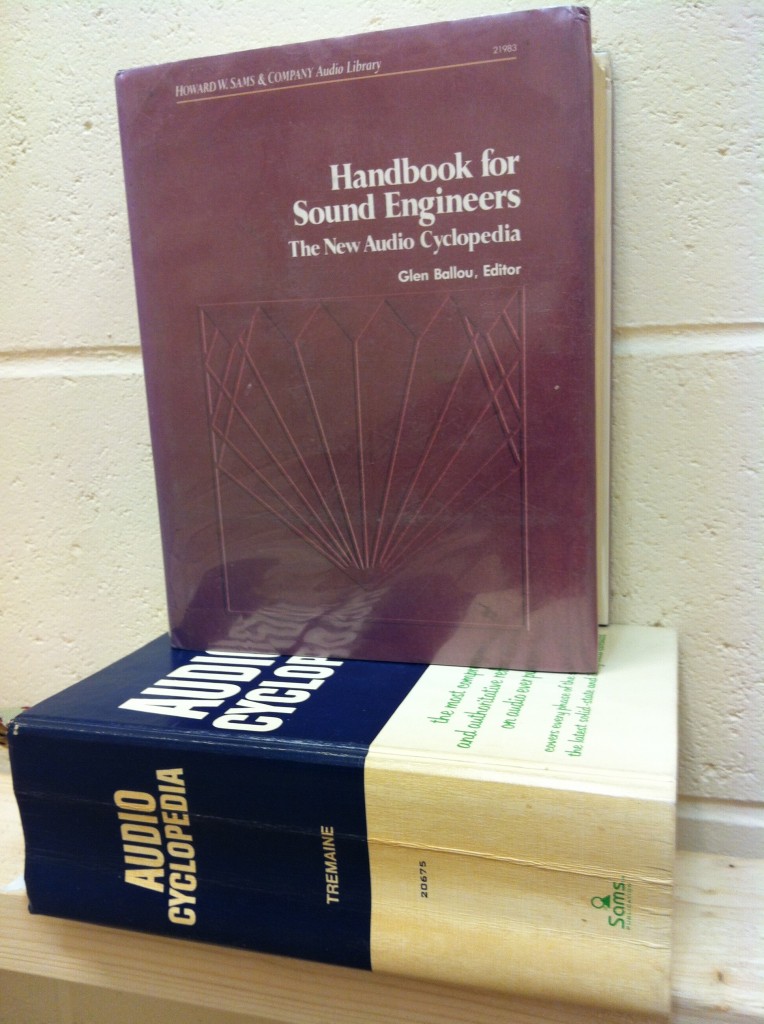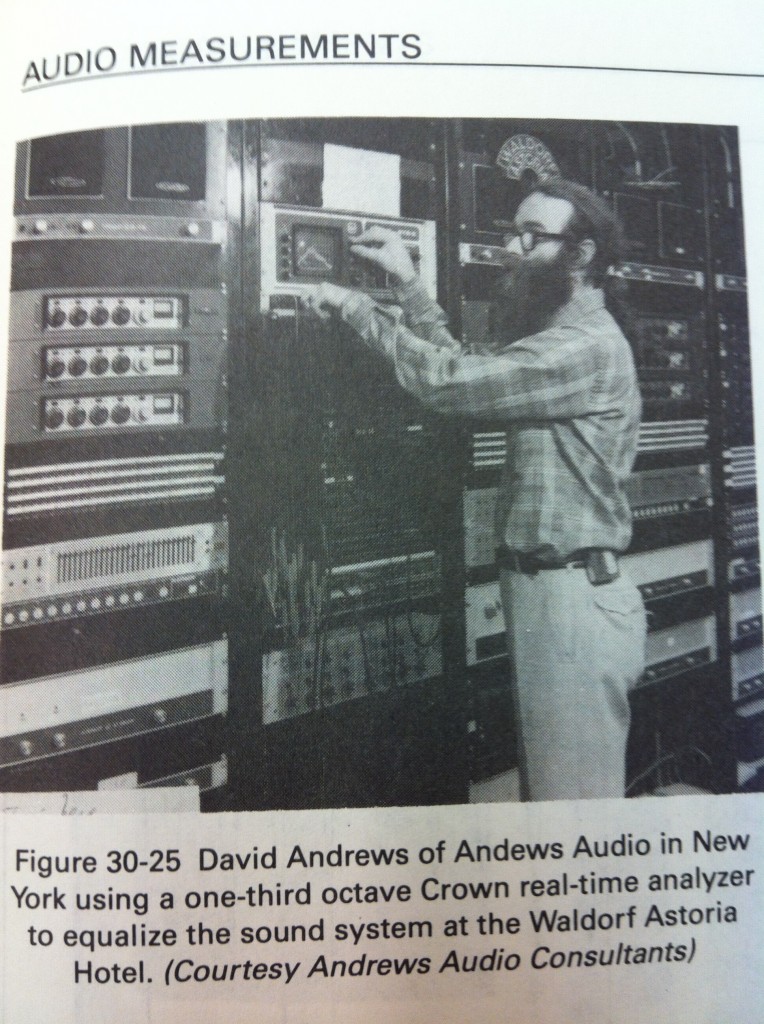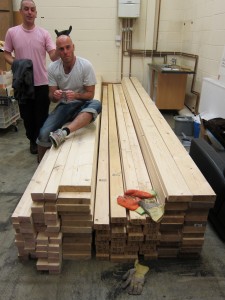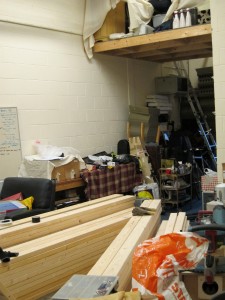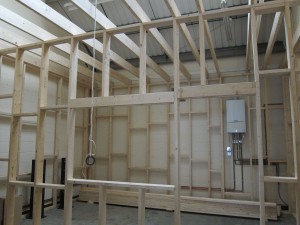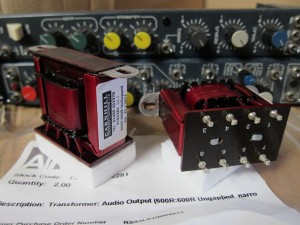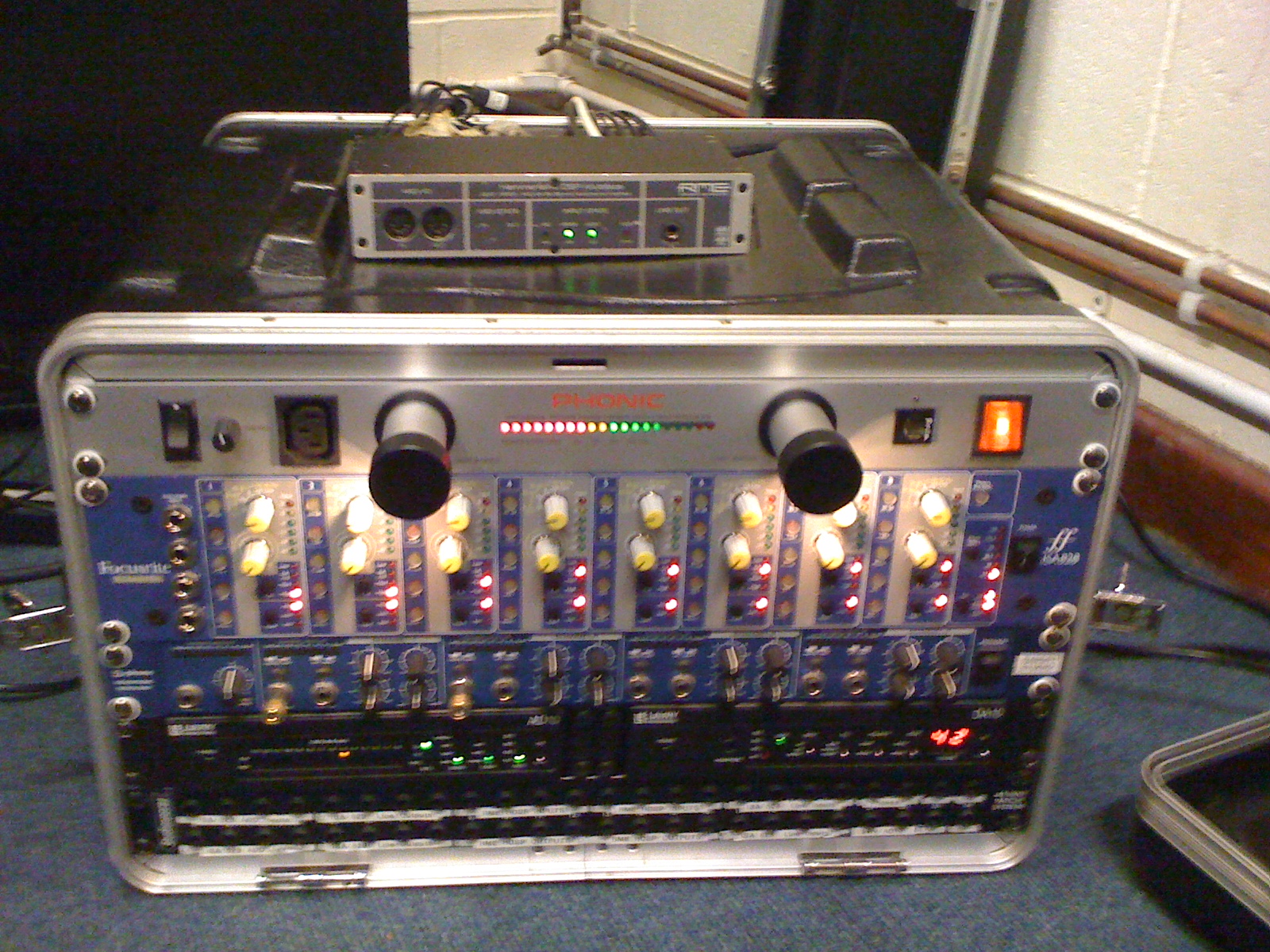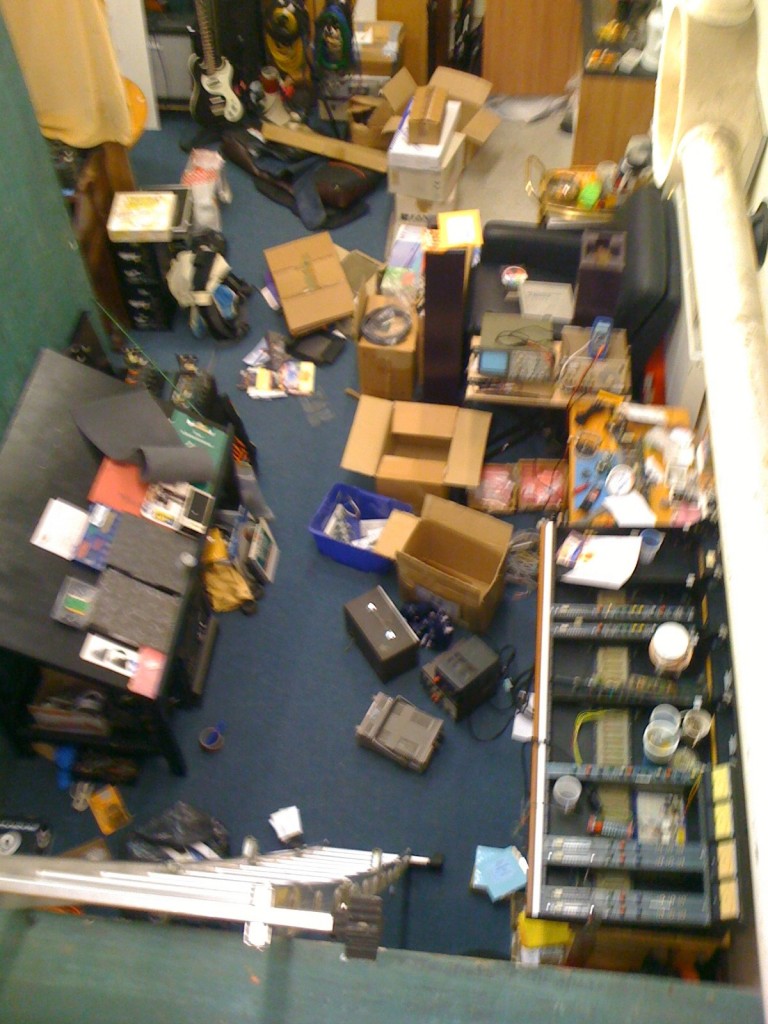It’s been well over a year since the last post on here. I have been meaning to write up what has been going on at Sandpit Studio most weeks in the intervening year and a quarter but there always seems to be something more pressing. Today is no different so I shall make it brief and in no way chronological.
The control room build is (mostly) complete and I have been working in here since December ’13. The final acoustic control layers were fiddly and time consuming, particularly as I was reticent to be too exact in the initial design, knowing that the building prior to their installation would throw a highly detailed plan askew and waste much time/effort. I shall put up some photos soon to detail the work, but here is a quick rundown of what went in…
Resonant absorber bulkheads: significant depth at the front and back of the room was used to create a light timber frame housing a series of rock wool lined recesses fronted with light plywood (4mm and 6mm) boards acting as diaphragms for a resonant absorption effect. Some are rectangular and some are more complex shapes with a variety of depths to produce a general, or at least not over focussed, low frequency absorption. These have proved very effective and have helped produce an RT60 (or whatever you call it these days) of around 0.3 seconds in the 50-100Hz range – I have so far only managed to carry out a basic acoustic test to check nothing was too awry, and once a few final details have been finished and I can spare a day I shall carry out some proper tests to find any peaks/troughs and tweak some of the resonant absorber panels to adjust. Though I cannot effectively change the depth of the recess behind the plywood diaphragms to alter their resonant frequency, the plywood can be mass loaded and damped to make adjustments, though this is not a quick job – I’ll have to find a doozy of a low frequency dip to want to do it! So far, to my ear and the basic acoustic test carried out the low end seems pretty much free of any wonkiness, honkiness and ringing – franky it sound wonderful in here and has made me hyper-aware of how shit the outside world can sound!
Wideband absorbers: At the front of the room (behind the mixing desk and monitors) is a 1m high strip of cloth fronted wideband absorbers. These are rock wool lined recesses (again) fitted with a series of fanned out vertical fins made of plywood with a thin layer of rockwool on one side (held on/covered with cling film) and then wrapped in needled wool felt (used for furniture stuffing). There are a corresponding pair at the rear of the room either side of a bench seating recess, which has been dubbed the ‘Meat Baffle’ as it’s absorption/baffling will be a function of the presence of meat…human meat…or clients as they’re often known. Anyway…these absorbers are primarily to remove a wide frequency band of early reflections from all seated and standing listening positions, which they do well. Bloody cheap too. A final note on the bulkheads that house all this absorption: the light timber frame is mounted to the inner isolation frame of the room (there are two independent frames) and do not directly contact with the floor – all joins are buffered with rubber foam. The timber frame was lined with deadsheet (called SBM5), a mass loaded vinyl matting that weighs 5kg sq.m. whilst being 2mm thick. Terrible to work with, smells like rubber and Amaretto combined (simultaneously pleasant and unpleasant), but forms a heavy limp-bag affair within the recessed chambers that helps reduce low frequency transmission.
Diffusers: Two types of diffusion have been created in the control room. The first, and most visually striking, is a set of three timber Quadratic Residue Diffusers mounted to the front wall. These remounted over the wideband absorber strip. These were based on a prime number base of 23 to create a diffusion range that extends down into the low mids. It uses 47mm x 47mm planed timber lengths ranging in 10mm steps from 10mm to 220mm. In all there are 667 pieces, which took forever to cut (an hour everyday for a week or two). There is a mistake in the final layout chosen (I made a spreadsheet that plated the lengths according to the quadratic residue of modulo 23 and could then move it about to get the least regular spacings) as my only visual reference was a sheet of numbers (0-22) and so didn’t spot the satellite dish shape in the centre which acts, at dead centre, like a beam of mid-frequency – sounds great on a vocal, but not what you want in a control room. Adding a few pieces of timber (swapping four 20mm for four 240mm) will cure it. Apart from the beam the diffusers work well in keeping the mix position really monitor focussed. The second type of diffuser is on the side walls and is what used to be called a phase grating, which I saw in an old sound engineering book. For this I used a Primitive Root sequence (another mathematical system for generating pseudo-randomised patterns from prime numbers) to arrange vertical strips of plywood (9mm thick) over a felt-like material covered timber frame, itself partially filled with rock wool and lined with deadsheet. This has given the wall treatment a kind of mixed absorption and diffusion effect to reduce reflections and prevent resonances without over-deadening the space so that it is pleasant to be in – nothing worse than trying to be creative in a semi-anechoic chamber. The effect is also aesthetically pleasing with alternating strips of wood and white material, each a different width to the next (there are six widths from 20mm to 120mm), and the two walls have opposing material in the same patterns so wood is always opposite material, thus making sure there are no discrete standing wave opportunities.
More wideband absorption: The ceiling also features a light timber frame lined with deadsheet and covered in white felt-like material panels to form a nice light space above your head (the ceiling is about 2.6m). Inside the frame are a series of absorber fins like the wall recessed ones, though a lot less deep. I think there’s over 30 of them up there – I forget now as it took hours to cut, line and wrap the bastard things. Anyway, the minute they went in the effect was immediately, and pleasingly, obvious. This means my lovely parquet floor can bounce sound into the ceiling without it causing flutter echoes and the like.
The air extraction/inlet system in buried in the bulkheads with the grates mounted into a few plywood diaphragms. There is also a standard A/C unit mounted up above the rack gear area which barely ticks over to keep things nice and cool in here. I wouldn’t say the whole HVAC system is ‘whisper quiet’, but definitely quiet enough to ignore and inaudible as soon as you playback over 70dBA.
I made a three bay rack unit on one side of the room from leftover timber and fitted it with a simple hinged design so each section can be folded out to get to the rear of the gear, a feature that makes cabling and maintenance nice and simple. Two more rack bays form the mixing desk stand, one of which houses the five bantam patch bays that are immediately full. There is space for a sixth patchbay which should be enough if I ever fill the remaining rack spaces. The mixing desk, the late 70s Midas PR I have mentioned in other posts, is in place and semi weed in, but not ready for action as I have yet to build the custom centre section (mix buss summing and controls, and monitoring) and finish some of the channel refurbishments. All wiring in the control room, as well as tie lines to the live room, are installed and ready – I cannot count the number of solder joints I made, but its in the thousands. It was a little nerve wracking testing the patchbays, but I found no mistakes…that is until last week when I couldn’t get an output from one of my interface outputs (a 32 channel I/O Antelope Audio Orion) and discovered outputs 23 and 24 were the wrong way round. Glad it happened when I was on my own and not with a client during tracking – chasing faulty routing really kills a session. I love my patchbay and I get a peculiar satisfaction from seeing it at the end of the day looking like a rat’s nest of multicoloured wires – a real sign of work done. Having all my outboard to hand at last is such a pleasure. I’ve also made a wee pedal patch area at the end of the rack bays that sees a lot of action with reamping as well as guitar/bass tracking I’ve been doing in here for the Ghost Smoke album project that I’ve been working on sporadically with a couple of friends. It’s almost time for mixing on that, and I have been hoping to make it the first thing to come through the Midas PR, but we shall see as that’s a load of work. More on the whole Ghost Smoke thing in another post.
There is so much to say about this build, so more posts will hopefully follow soon. What’s left to do is mostly cosmetic – some final lighting pieces, the meat baffle seating cushions (sewing covers), and some painting/varnishing. I am at last getting around to the live room build, which is less complex, but a bit more ambitious in scale as the ceiling is just over 5m up – time for a proper scaffold tower and a winch (I’ve always wanted a winch).
A final piece of the sound puzzle here was supports for my monitors (Event Opals). I had initially hoped to build my own, but time and energy were at a premium when I moved into the control room so I bought some sand-fillable Quiklok monitor stands (2nd hand of course!) and blagged a review for IsoAcoustics L8R200s, which are short decoupling stands. They sounded like the perfect addition as the Quikloks were a bit of compromise as my own deign had a more comprehensive decoupling component. The IsoAcoustics are superb and provided the extra low frequency decoupling I needed – though the Opals are immensely heavy and well damped, there is still some serious energy there to try and keep from going through the floor and further. I thoroughly recommend them to anyone (they do a whole range of sizes) and they are worth the money (around £100 depending on size). Not sure I can justify any such solution for my old Auratones though, which now have bespoke wood platforms attached to the mixing desk stand/racks – some spikes or foam should see them good. I did build the platforms for my trusty NS10s, but as soon as set them up and switched them on I realised I just didn’t need them anymore as I really trust what I am hearing in this room with the Opals, a situation I haven’t had for along time (or ever really). The NS10s used to be great for a second opinion on mixes, but now they just felt like an added complication, and they also took up too much space in front of my lovely homemade QRDs. The great thing is that I sold them for more than twice what I ever paid for them – I hope the new owner appreciates them and the accompanying Quad 405-2 as much as I did. Oddly the Auratones are staying as I still find them useful for focussing on the mid range and switching out the extremities of a mix – I’ve always liked listening to stuff on them quietly anyway, which is probably a little odd. The great thing is that now I can bash out a rough mix and it translates fine. I have yet to complete a full mix down in here, but if current results are anything to go by, if it works in the room it’ll work outside. It has been a hard time building this room (with occasional help from my partners in crime Roger and Brian), especially whilst trying to keep some work coming in and becoming a Dad, but when I get to work in this room it all feels worth it. Next stop: live room.
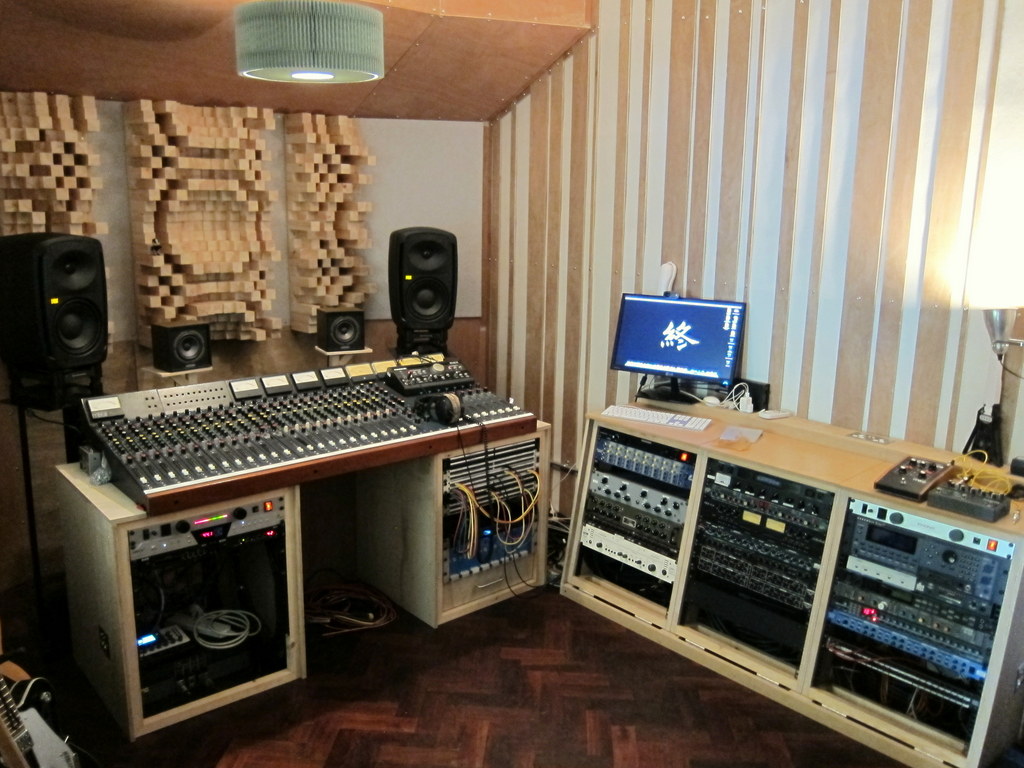
- Triple rack bay on the right with Primitive Root ‘phase grating’ treatment behind. Quadratic Residue Diffusers behind desk mounted over sideband absorbers

